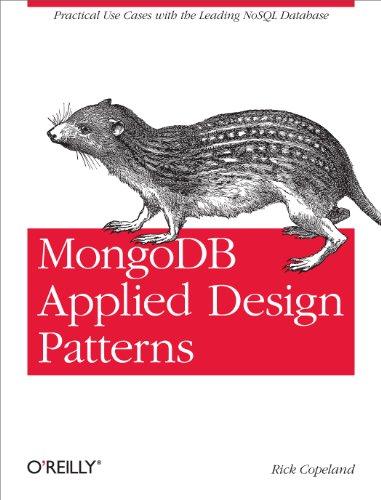Question
Add a method called int subtreeSize(AVLNode N) to AVLTree.java class that takes a node N and return the number of nodes in the subtree rooted
Add a method called int subtreeSize(AVLNode N) to AVLTree.java class that takes a node N and return the number of nodes in the subtree rooted at N included N itself. The running time of your method should be O(1) in the worst-case. [Hint: Add another field called int size to AVLNode.java class and update size parameter during insertion].
public class AVLNode{
int key;
int height;
AVLNode left;
AVLNode right;
//Constructor
public AVLNode(int k){
key=k;
height=0;
left=null;
right=null;
}
}
import java.util.*;
import java.lang.Math;
import java.io.*;
import java.lang.Integer;
public class AVLTree{
AVLNode root;
//constructor
public AVLTree(){
root=null;
}
//helper function
public void insert(int k){
AVLNode newnode = new AVLNode(k); // make new node
if (root==null){
root=newnode;
}
else {
root=AVLinsert(newnode,root);
}
}
//AVLinsert is a recursive function
public AVLNode AVLinsert(AVLNode newnode, AVLNode parent){
AVLNode temp=parent;
if (newnode.key if(parent.left==null){ parent.left=newnode;} else{ parent.left=AVLinsert(newnode, parent.left); if (Height(parent.left)-Height(parent.right)==2){ if (newnode.key temp=rightrotation(parent); // apply rightrotation } else { temp=leftrightrotation(parent); //apply leftright rotation } } } } else if (newnode.key>parent.key){ if(parent.right==null){ parent.right=newnode; } else{ parent.right=AVLinsert(newnode, parent.right); if (Height(parent.left)-Height(parent.right)==-2){ if (newnode.key>parent.right.key){ temp=leftrotation(parent); //apply left rotation } else { temp=rightleftrotation(parent); //apply rightleft rotation } } } } else System.out.println("Duplicate Keys"); if (parent.left==null && parent.right!=null){ parent.height=parent.right.height+1; } else if (parent.right==null && parent.left!=null){ parent.height=parent.left.height+1; } else if ((parent.right!=null) && (parent.left!=null)){ parent.height=Math.max(parent.left.height,parent.right.height)+1; } return temp; } public AVLNode rightrotation(AVLNode parent){ //right rotation for LL Case AVLNode temp=parent.left; parent.left=temp.right; temp.right=parent; parent.height=Math.max(Height(parent.left),Height(parent.right))+1; // update the height after rotation temp.height=Math.max(Height(temp.left),Height(temp.right))+1; //update the height after rotation return temp; } public AVLNode leftrotation(AVLNode parent){ //left rotation for RR Case AVLNode temp=parent.right; parent.right=temp.left; temp.left=parent; parent.height=Math.max(Height(parent.left),Height(parent.right))+1; // update the height after rotation temp.height=Math.max(Height(temp.left),Height(temp.right))+1; //update the height after rotation return temp; } public AVLNode leftrightrotation(AVLNode parent){ //leftright rotation for RL Case parent.left=leftrotation(parent.left); AVLNode temp=rightrotation(parent); return temp; } public AVLNode rightleftrotation(AVLNode parent){ //rightleft rotation for LR Case parent.right=rightrotation(parent.right); AVLNode temp=leftrotation(parent); return temp; } public int Height(AVLNode x){ // return height of tree rooted at x if (x == null){ // If node is null take height= -1 return -1;} else { return x.height;} } public boolean empty(){ //test if the tree is empty if (root==null){ return true;} return false; } public void printLevelOrder(){ //print the in level order int h=root.height; for (int i=0; i<=h;i++){ printLevel(root,i); System.out.println(); } } public void printLevel(AVLNode root, int level){ if(root==null){ return; } if(level==0){ System.out.print(root.key+" "); } else if(level>0){ printLevel(root.left, level-1); printLevel(root.right, level-1); } } public void preorder(AVLNode root){ if (root==null){ return;} else{ System.out.print(root.key+" "); preorder(root.left); preorder(root.right); } } public void inorder(AVLNode root){ if (root==null){ return;} else{ inorder(root.left); System.out.print(root.key+" "); inorder(root.right); } } public void postorder(AVLNode root){ if (root==null){ return;} else{ postorder(root.left); postorder(root.right); System.out.print(root.key+" "); } } public static void main(String[] args){ AVLTree T=new AVLTree(); T.insert(5); T.insert(4); T.insert(3); T.insert(6); T.insert(7); T.insert(2); T.insert(1); T.printLevelOrder(); System.out.println(" "); System.out.print("Preorder Traversal :"); T.preorder(T.root); System.out.println(" "); System.out.print("Inorder Traversal :"); T.inorder(T.root); System.out.println(" "); System.out.print("Postorder Traversal:"); T.postorder(T.root); System.out.println(" "); } }
Step by Step Solution
There are 3 Steps involved in it
Step: 1

Get Instant Access to Expert-Tailored Solutions
See step-by-step solutions with expert insights and AI powered tools for academic success
Step: 2

Step: 3

Ace Your Homework with AI
Get the answers you need in no time with our AI-driven, step-by-step assistance
Get Started


